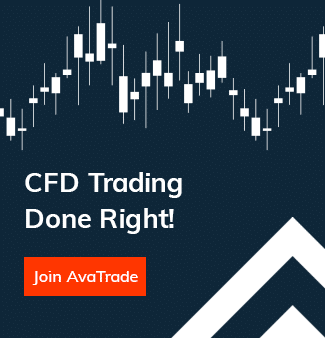BP
| MT5/MT4 Symbol:_BP |
| Instrument:BP |
| Country:UK |
| Currency:GBP Penny |
See a trading opportunity? Open an account now!
Headquartered in London, United Kingdom, BP Plc was founded on April 14th, 1909 by William Knoxx. The company operates worldwide as an integrated oil and gas company and offers its services through 3 major business segments: Upstream, Downstream and Rosneft.
The Upstream segment includes oil and gas exploration, and the midstream as transportation as well as storage and processing.
The Downstream segment includes refining, manufacturing, marketing and the transportation of end products to wholesale and retail customers.
The Rosneft segment is involved in various investment and financial activities relevant to the company.
As described above, BP has footprints in virtually the entire oil value chain – from exploration to oil trading. But this was not always the case.
The company started as the Anglo-Persian Oil Company, a financier and explorer of oil in Iran. The company later evolved into British Petroleum Company Ltd, gaining the brand BP as it continuously expanded throughout the world.
Around the turn of the millennium, BP placed more emphasis on alternative sustainable energies. This also coincided with a name change to ‘Beyond Petroleum’ (Still BP) and also created the iconic ‘green sunflower’ logo.
BP Plc is part of ‘Big Oil’, a term used to describe 7 of the largest publicly traded oil and gas companies in the world.
To reach its lofty heights, BP has, over the years, performed strategic mergers, partnerships and acquisitions.
Some of the major deals include the 1998 BP-Amoco mega-merger worth $48 billion and the 2001 $5.56 billion acquisition of Veba Oel AG.
BP went public in 1977 when the British government (then having a controlling stake in the company) decided to sell its shares.
The company is listed on the New York Stock Exchange where it trades under the ticker symbol BP. It is in the Energy Sector, under the Oils and Integrated Industry. The stock is also cross-listed on the London Stock Exchange and Frankfurt Stock Exchange.
BP Stock History
As of September 2020, BP Plc has performed 4 stock splits since going public, as follows: a 2-for-1 on July 3rd 1978; a 2-for-1 on June 23rd 1980; a 2-for-1 on June 6th 1997; and a 2-for-1 on October 4th 1999.
BP stock has had mixed fortunes in the market, with its price always vulnerable to the volatility of the oil market. Before the turn of the millennium, BP sustained a multiyear rally from circa $20 in 1994 to a top of circa $62 by December 1999.
A retracement then followed as soon as we entered the new millennium, sending the stock to lows of circa $35 by January 2003. A strong rally then followed that eventually led the stock printing its all-time highs at circa $79 in November 2007.
The effects of the 2008 global financial crisis hit the oil industry hard and inspired a plunge of BP stock to lows of circa $25 in June 2010. The stock then attempted a gradual rally as the global economy recovered and managed to print a temporary high at circa $53 in June 2014.
Since then, the stock has struggled to get anywhere close to $50, with the famous 2016 oil price crash which pushed the price to below $30. In 2020, the coronavirus pandemic inspired weak global demand and supplied massive headwind pressure and ensured the stock continued to trade circa $20 as of September 2020.
How to Trade BP Stock
As a major global oil company, BP is one of the most followed stocks in the financial markets. Here are some of the factors to consider when trading the stock:
- Tariffs and Trade Agreements
BP has operations in over 70 countries around the world, which leaves the company susceptible to possible changes in tariffs and trade agreements instituted in different jurisdictions. Such possible changes can particularly be very devastating in the capital-intensive industry that BP operates in. - Legislative and Taxation Policy
Oil is practically one of the most consumed commodities in the world. As an inherently vital commodity, many countries constantly review their taxation and legislative stance to control its circulation and consumption. Any major changes in this regard can have significant impacts on BP’s bottom line. - Lawsuits and Negative PR
BP has, over the years, dealt with conspicuous and controversial oil spills and company executive rows that have dealt the company’s image serious blows. Admittedly, the name change to ‘Beyond Petroleum’ has managed to improve its overall image, but its continued operations in the oil industry mean that the negative PR risk is always around the corner. - New Technologies Rollout
With the company now focused strongly on alternative energy sources, both consumers and investors are always anticipating the rollout of new sustainable products. New product rollouts will always provide tailwinds for the BP stock. BP competitors are also watched in this regard, and if they release ground-breaking new products, the BP stock will be pressured lower. - Periodic Earnings Reports
The BP fiscal year runs from January to December and the company releases quarterly and annual reports that give investors vital information about the company’s business health. Typically, reports, such as positive guidance, can inspire higher stock prices whereas negative reports, such as significant losses, can trigger lower stock prices.
BP operates in a generally volatile and unpredictable industry. With this in mind, it is prudent to assess the above factors for their short to medium term impact rather than the long term.
** Disclaimer – While due diligence, care and research has been undertaken to compile the above content, it remains an informational and educational piece only. None of the content provided constitutes any form of trade or investment advice or recommendation and should not be construed as such.
Friedberg Direct BP Stock Trading Information
- MT5 Symbol: _BP
- Trading Hours: Monday – Friday (GMT) 07:00 – 15:29
- Country: UK
- Currency: GBP
- Exchange: London Stock Exchange
- Typical Spread: 0.13%
- Units: Share
- Minimum Trade Size: 100
- Leverage: 3.3:1
Why Trade BP on Friedberg Direct MT5
Here is why you should trade BP stock with Friedberg Direct:
- Local Brand
Friedberg Direct is fully regulated in Canada. Enjoy the peace of mind when trading with a locally regulated Canadian broker.
Trade BP stock with a leverage of up to 3.3:1 on Friedberg Direct and magnify your trading capabilities.
- Go Long or Go Short
BP is inherently a volatile stock. Trade the stock as a CFD, whether prices rise or fall.
- Trading Conditions
Trade BP and other financial assets with low spreads, transparent pricing and rapid execution at all times.
Trade BP stock on the Friedberg Direct platform now!
Disclaimer: Please note these are stock CFDs (Contracts for Difference)
When you enter into a CFD trade you don’t buy the actual stock itself but instead agree on a contract with the broker to settle the difference in value between the entry and exit price of the Stock based on the price the stock is trading at on the Exchange it is listed. That means when you trade Stocks CFDs with Friedberg Direct you get a flexibility that stock market rules often make very difficult or even impossible for some.







